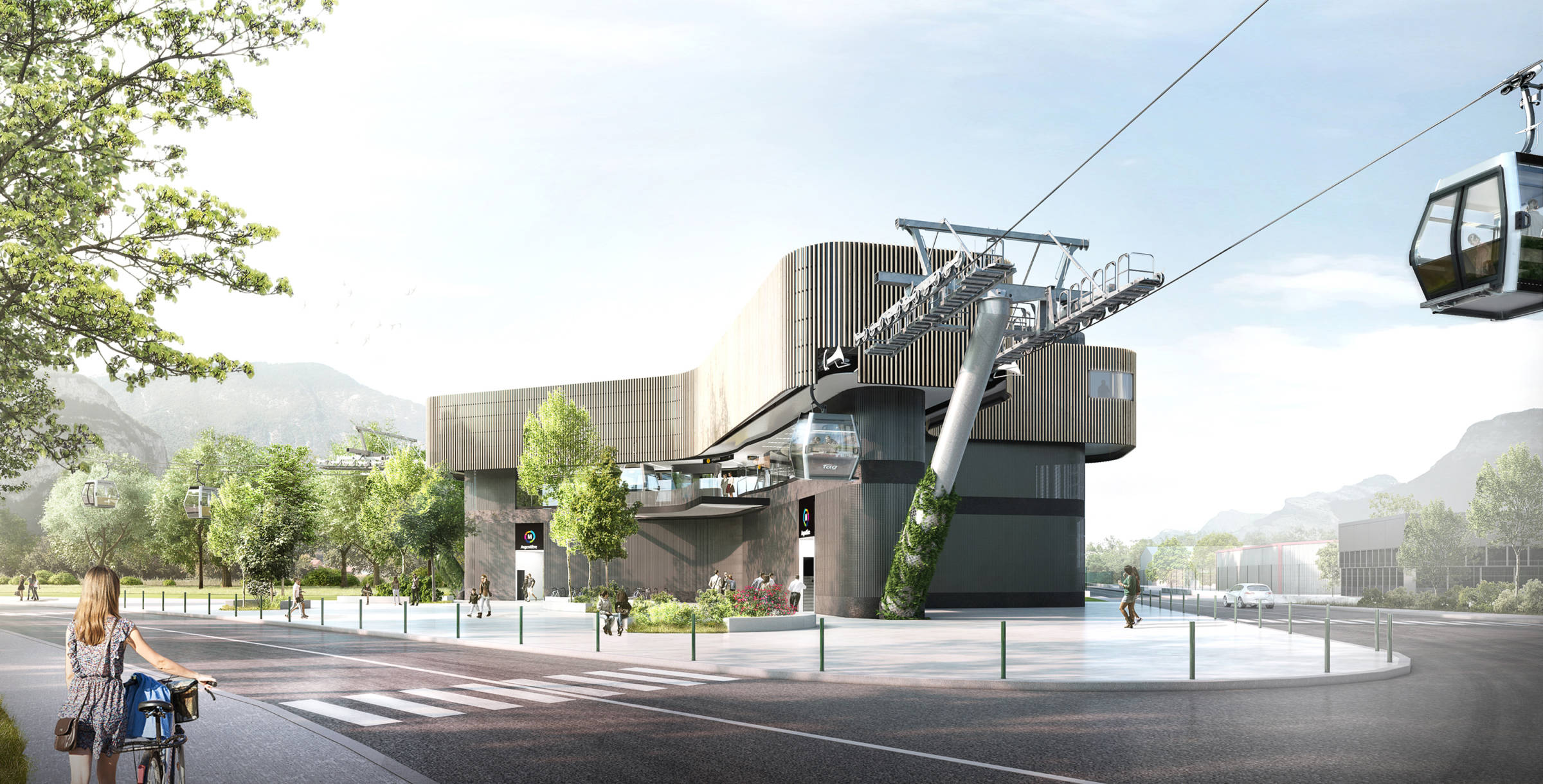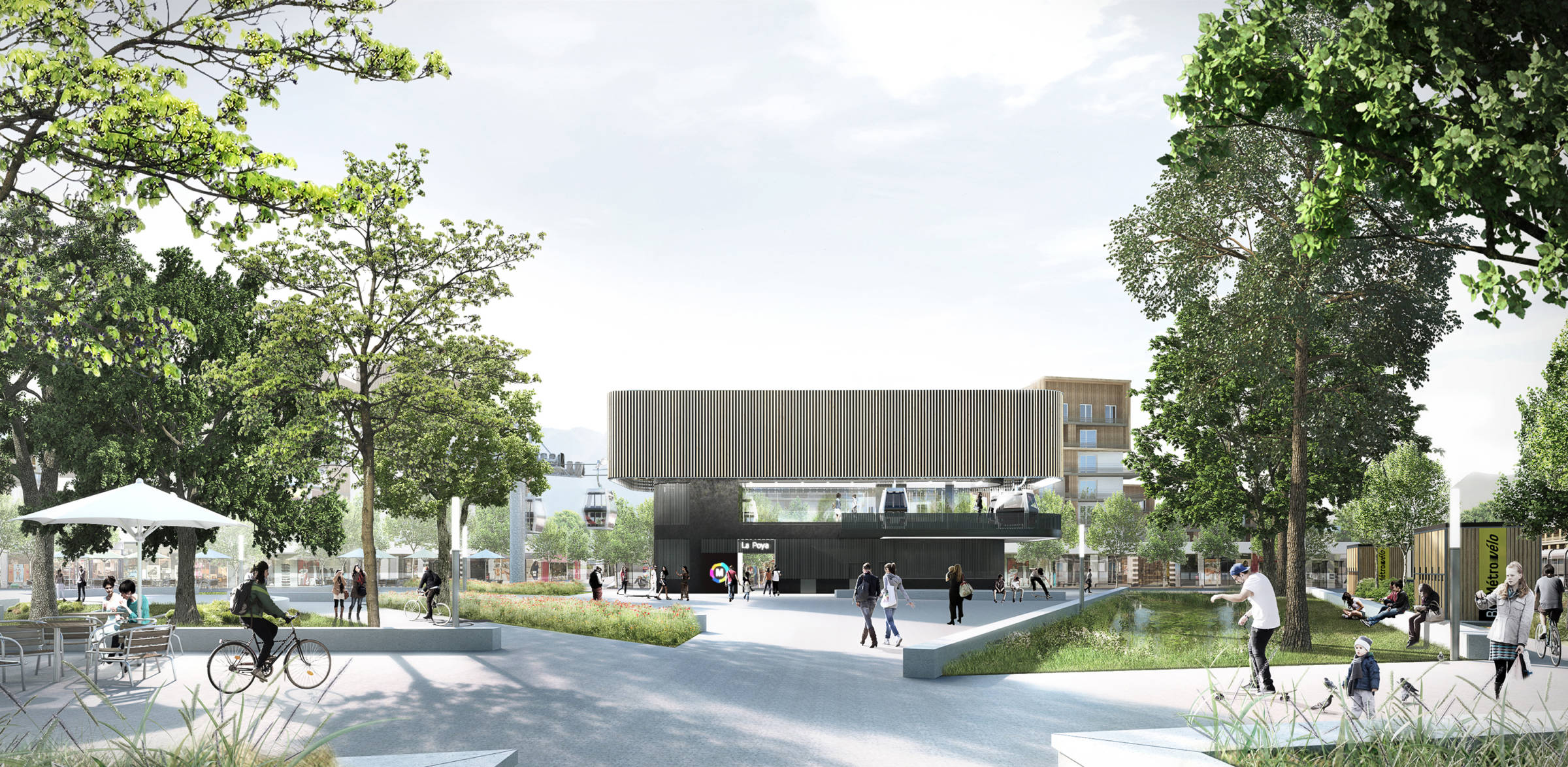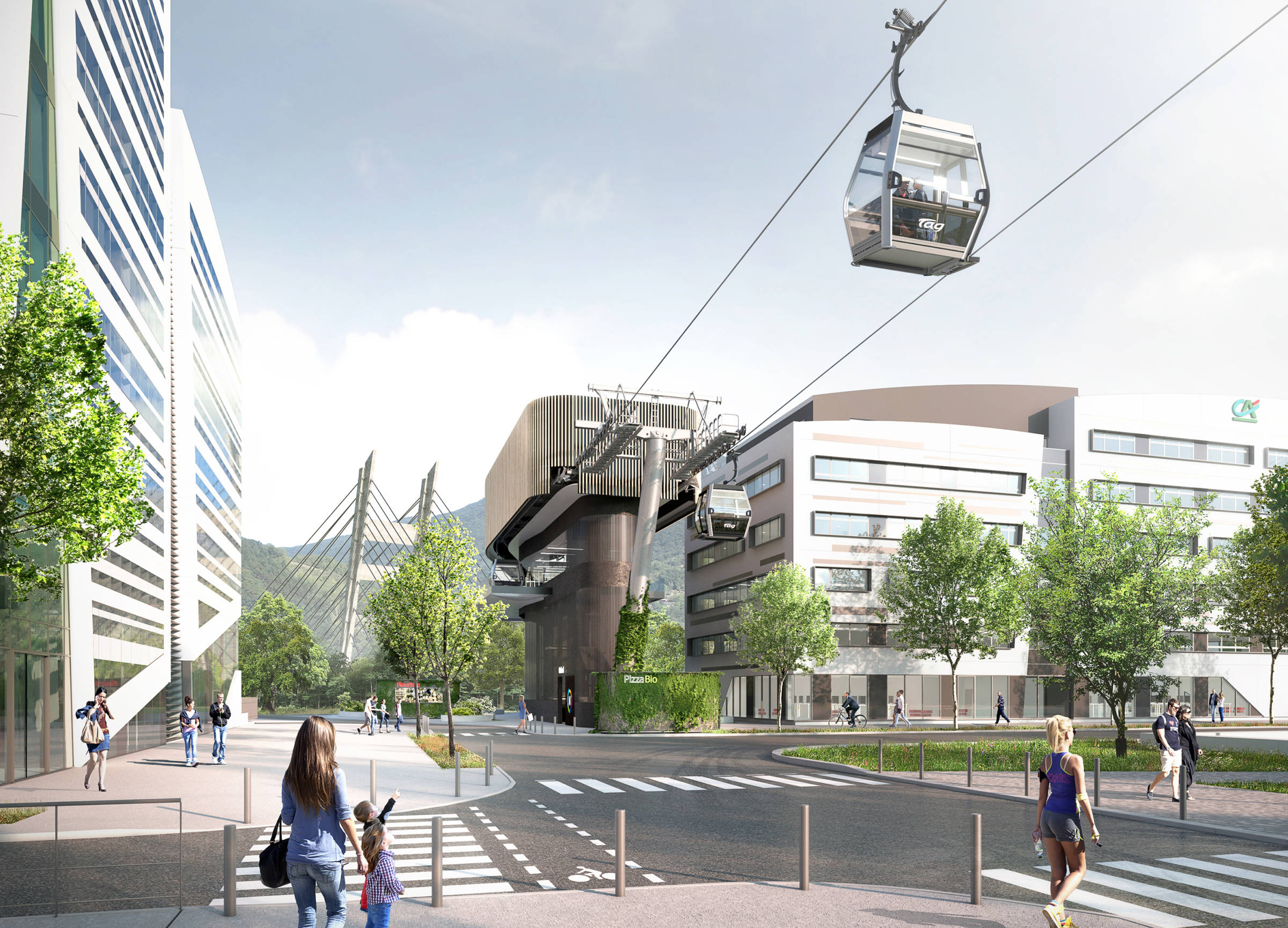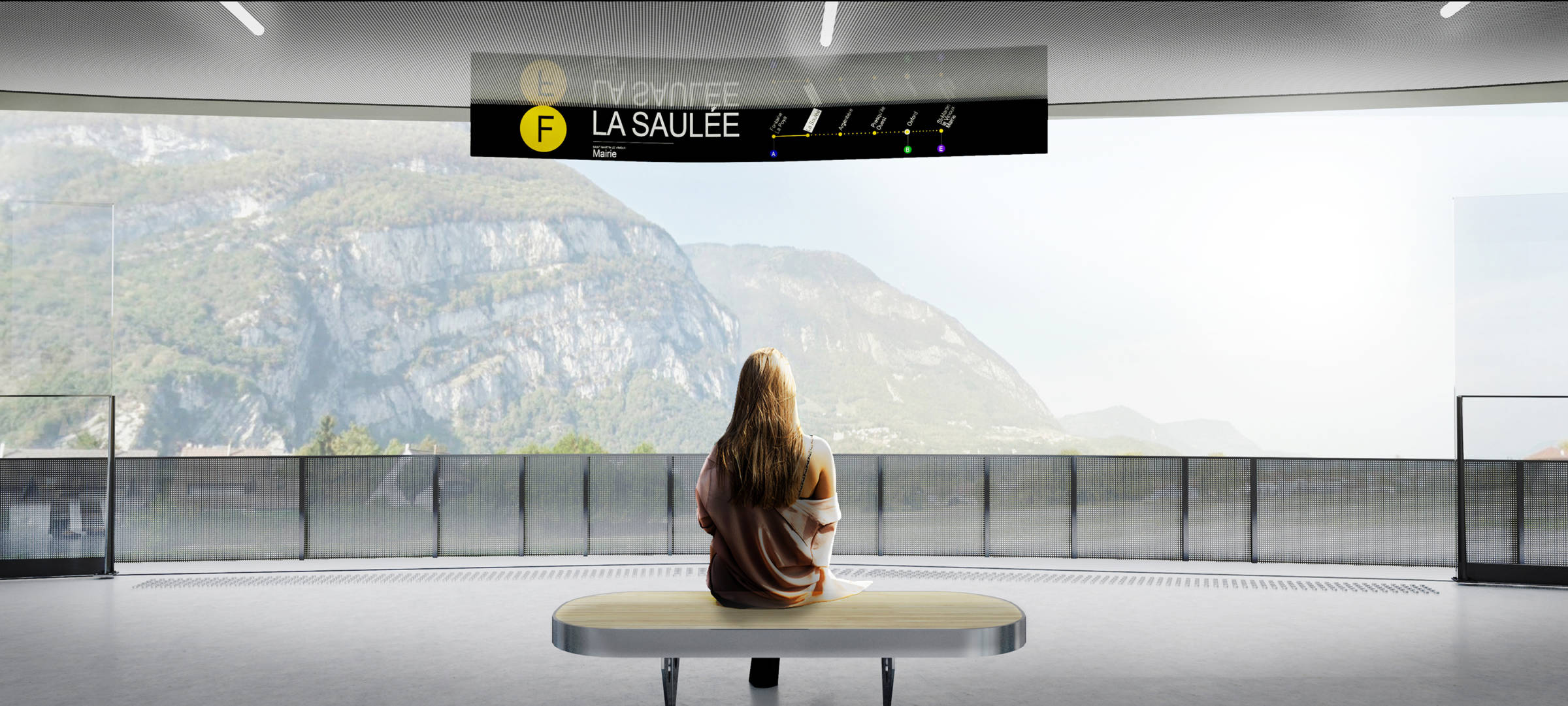With a length of 3,6 kilometers along a strategic axis, this
infrastructure of metropolitan importance will offer the
region’s inhabitants an innovative air transport technology.
While its use in tourism is well known in Grenoble, where
the “bubbles” have become the city’s emblem, public
transport by cable is still underdeveloped in France.
Yet it can adapt to all the challenges of urban mobility, and is
highly prized worldwide for its performance and environmental
virtues. With a capacity of 1,500 passengers per
hour over an extended opening period, this air transport
solution will complement the overall travel offer in the
Grenoble area.
Overcoming natural obstacles (the Isère and Drac rivers) and urban barriers (motorways and the rail network), the route will fly over the Presqu’île Scientifique, connecting to the existing public transport network (trams and buses). It will consists of six stations, four of which will be passenger stations and two technical stations when it is launched.
Developing a common identity throughout the line, the stations will be urban totems with a unified design, forming “balconies” over the city with a 360° view of the distant landscape. Compact, they will be distributed by a central platform to limit the impact on the ground, so that they can be built on constrained sites and encourage the development of public space. Above the platform, their technical cap becomes a green roof, offering a pleasant view of the surrounding buildings. Metal, wood and plants are combined to good effect, to create a coherent overall design.
Team
Directors
Team
Hélène Bottarel
Vincent Platel
Sandrine Pieck
Landscape
Corinne Thibaut
Perrine Alexandre
Quantity surveying
Didier Deschamps
Céline Castedo




